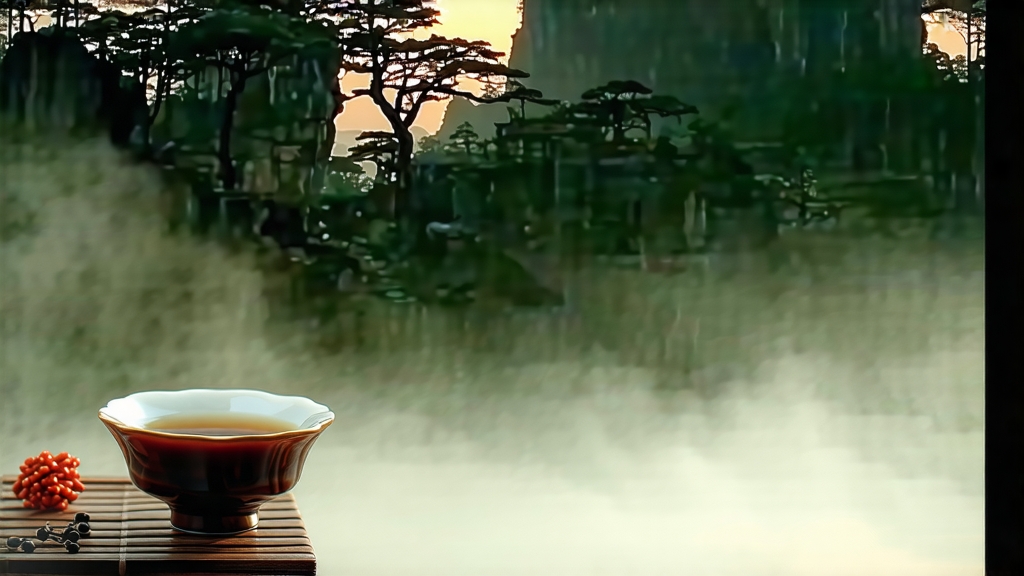
If green tea is China’s springtime whisper and pu-erh its autumnal soliloquy, then Wuyi Shui Xian is the mountain’s baritone—resonant, mineral, lingering like the echo of a temple bell above the Nine-Bend River. Known in the West sometimes as “Narcissus” or simply “Shui Xian,” this oolong is not merely a cultivar; it is a cultural narrative written in fire, stone, and fog. To understand it is to step into the vertical world of northern Fujian’s Wuyi Mountains, where basalt cliffs press tea bushes against the sky and every leaf carries the flavor of prehistoric seabeds.
-
From Myth to Market: a 900-Year Journey
Local monks still repeat the legend: a drought-plagued village near the “Cave of the Water Immortal” prayed to a Taoist deity; overnight a fragrant spring burst from the rock, and beside it sprouted the first tea tree whose leaves smelled of orchards and wet stone. Romantic, yet the first verifiable record appears in 1392, when Ming dynasty imperial inspectors listed “Shui Xian” among tribute teas. By the Qing, itinerant tea merchants from Guangdong and Macau were climbing the 800-metre staircase through the “Heavenly Heart” pass, pockets stuffed with silver for dark, twisted leaves that could survive a month at sea and still bloom into honeyed liquor in foreign porcelain. The name “Shui Xian” thus migrated from local folklore to global commodity two centuries before the word “oolong” itself entered English dictionaries. -
Botanical Identity: Cultivar or Brand?
Unlike many Chinese teas that are defined by place alone, Shui Xian is both a place and a plant. The original “Old Bush” (laocong) Shui Xian is a large-leaf, medium-sprout cultivar (Camellia sinensis var. sinensis, clone Wuyi #3) that can reach five metres if left unpruned, its thick, leathery leaves evolved to withstand the mountain’s razor-sharp temperature swings. Gardeners prize bushes older than thirty years because the root system taps into mineral-rich fissures; some centenarian specimens still cling to crevices above the “Tiger Roar” gorge, yielding less than 300 g of finished tea each spring yet commanding prices higher than silver bullion. Meanwhile, low-elevation cousins grown in nearby townships carry the same name but speak with a softer accent—proof that in Wuyi, terroir trumps genetics. -
The Cliff Gardens: Terroir in 3-D
UNESCO calls the Wuyi range a “living museum of subtropical biodiversity,” yet for tea people it is a 60-kilometre-long stone fermentation vessel. Granite and tuff cliffs absorb daytime heat and re-radiate it at night, creating a diurnal swing of 15 °C during April plucking season. Mist rising from the Nine-Bend River acts as a natural shade-cloth, increasing chlorophyll while slowing tannin build-up; the result is a leaf that is physiologically tender yet chemically complex. Soil tests reveal ultra-high potassium and magnesium—minerals that translate into the famous “yan yun” or “rock rhyme,” a tactile after-impression that feels like licking a wet pebble, sweet and cool at once. No other tea-growing region on earth combines such steep topography with a drainage pattern that flushes yet never erodes the thin, stony loam. -
Crafting the “Water Immortal”: a Dialogue with Fire
Plucking begins at dawn when leaf turgor pressure peaks; two leaves and a bud are snapped, never cut, to keep cell walls intact. The first transformation is outdoor withering under a bamboo sieve, where leaves lose 12 % moisture while absorbing ultraviolet notes from the high-altitude sun. Indoor withering follows on water-heated racks at 28 °C; every 20 minutes a master “shake-wilts” (yaoqing) the leaves in circular rattan trays, bruising the edges just enough to invite oxidation enzymes to the rim while the center stays green. When the leaf emits a ripe-peach aroma, oxidation is arrested by a 280 °C tumble in a cast-iron drum for 90 seconds—long enough to fix color, short enough to preserve floral precursors.
What distinguishes Shui X